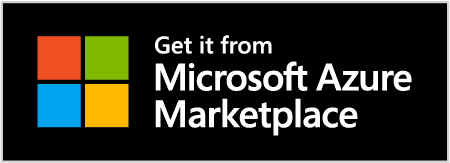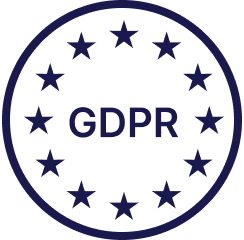Exploit
Ghost in the machine! Operation Zero Disco hijacks Cisco switches via a critical...
In one of the most significant cybersecurity disclosures of the year, Trend Micro has detailed **"Operation Zero Disco,"** a highly sophisticated attack campaign leveraging a critical vulnerability in Cisco switches. The threat actors use a flaw in the Simple Network Management Protocol (SNMP) to install a stealthy Linux rootkit, granting them permanent, hidden control over the network infrastructure. This represents a fundamental shift in attacker methodology, moving from servers and workstations to the very backbone of the network itself.
## **CVE-2025-20352 Explained**
The entire attack chain begins with a single point of failure: **CVE-2025-20352**.
This is a critical-rated vulnerability (CVSS score likely 9.8+) within the SNMP subsystem of specific Cisco IOS XE and IOS Software. SNMP, or Simple Network Management Protocol, is a ubiquitous service used for monitoring and managing network devices. The flaw allows an unauthenticated, remote attacker to execute arbitrary code with the highest level of privileges (root) by sending a specially crafted SNMP packet to a vulnerable device.
The most alarming aspect is that the exploitation requires no user interaction and leaves no immediate forensic trace, making the initial breach virtually silent.
### **Primary Targets in the Crosshairs**
The campaign has shown a deliberate focus on essential Cisco switching hardware, including:
* Cisco Catalyst 9400 and 9300 Series Switches
* Legacy Cisco Catalyst 3750 Series Switches
These devices are not obscure; they are the foundational plumbing of enterprise networks worldwide, handling data for corporations, governments, and critical infrastructure. The attackers are strategically targeting older, unpatched, or internet-facing instances of this equipment.
## **The Anatomy of an Advanced Attack**
Operation Zero Disco is not a simple smash-and-grab; it is a methodical, multi-stage operation designed for maximum stealth and persistence.
### **Phase 1: Initial Compromise and Exploitation**
The attack initiates with broad scanning to identify vulnerable devices. Once a target is located, the attacker deploys the exploit for CVE-2025-20352. This malicious SNMP packet triggers the vulnerability, allowing the attacker to break out of the protocol's intended constraints and execute their own commands on the underlying operating system with root-level authority.
### **Phase 2: Deployment of the "Zero Disco" Rootkit**
With a foothold established, the attacker installs their namesake payload: a custom Linux rootkit. This is where the operation's true sophistication is revealed. Unlike traditional malware that writes files to a disk, this rootkit is largely fileless. It operates by injecting malicious code directly into the memory of the key IOSd process—the core software that runs the switch's operating system.
**Key capabilities of the rootkit include:**
* **A Universal Backdoor Password:** It sets a secret, hardcoded password that provides backdoor access to the switch's console, completely bypassing all legitimately configured user credentials.
* **Memory Residency:** By living primarily in memory, it avoids leaving traces on the filesystem, rendering conventional file-based antivirus and integrity checks useless.
* **Persistence Mechanism:** The rootkit is engineered to survive device reboots, ensuring the compromise is long-lasting.
### **Phase 3: Command and Control via the UDP Backdoor**
To maintain remote control, the rootkit establishes a covert communication channel. A separate UDP-based backdoor component listens for encrypted commands from the attacker's command-and-control (C2) server.
**This backdoor controller grants the attacker god-like control over the device, enabling them to:**
* **Disable all system logging,** effectively making the switch "forget" all malicious activity.
* **Bypass authentication checks** to grant access to anyone using the secret handshake.
* **Hide malicious configurations** from the `show running-config` command. Specific user accounts, EEM (Embedded Event Manager) applets, and Access Control Lists (ACLs) can be active on the device while remaining completely invisible to network administrators.
* **Execute "timestomping,"** manipulating file timestamps to avoid detection during forensic audits.
### **Phase 4: Lateral Movement and Espionage**
With full, invisible control over a network switch, the attacker gains a strategic vantage point. They can now:
* **Bridge separate VLANs,** dismantling critical network segmentation designed to contain breaches.
* **Conduct ARP spoofing** to impersonate trusted IP addresses, allowing them to bypass internal firewalls and intercept sensitive data in transit.
* **Move laterally** throughout the network to target high-value servers and workstations, all from a trusted network position.
## **Mitigation and Defense: A Strategic Response**
Given the severity and stealth of this threat, a layered and immediate defensive strategy is non-negotiable.
### **Immediate Action: Patching and Workarounds**
The single most effective action is to apply the official patch. Organizations must immediately upgrade their Cisco switches to a fixed software release. The **Cisco Software Checker** should be used to identify the correct version for specific hardware models.
If patching cannot be performed instantly, a temporary mitigation is available. Administrators can disable the specific vulnerable Object ID (OID) using the SNMP view configuration:
`snmp-server view NO-DISCO iso excluded`
`snmp-server community public view NO-DISCO RO`
**Important Note:** This is a temporary workaround, not a permanent solution. Patching remains critical.
### **Strategic Security Hardening**
Beyond immediate mitigation, organizations must reinforce their security posture:
* **Eliminate Default SNMP Communities:** Immediately change or disable well-known community strings like "public" and "private."
* **Restrict SNMP Access:** Use Access Control Lists (ACLs) to ensure the SNMP service is only accessible from a dedicated, trusted management station and is blocked from general network access.
* **Conduct Proactive Threat Hunting:** There is no automated tool to reliably detect a compromise. Security teams must hunt for anomalies, such as unexplained device reboots, unexpected EEM scripts, or unusual SNMP traffic patterns.
* **Engage Cisco TAC for Forensic Analysis:** If a compromise is suspected, the only reliable course of action is to contact Cisco's Technical Assistance Center for a low-level forensic investigation.
It demonstrates that advanced threat actors are now systematically targeting the network infrastructure itself with tools designed to be invisible to conventional security controls.
The combination of a potent, remotely exploitable flaw and an advanced, persistent rootkit creates a perfect storm for enterprise security. This campaign serves as a stark reminder that network devices are not just plumbing—they are critical security endpoints that require the same level of scrutiny, patching, and monitoring as any server or desktop.






